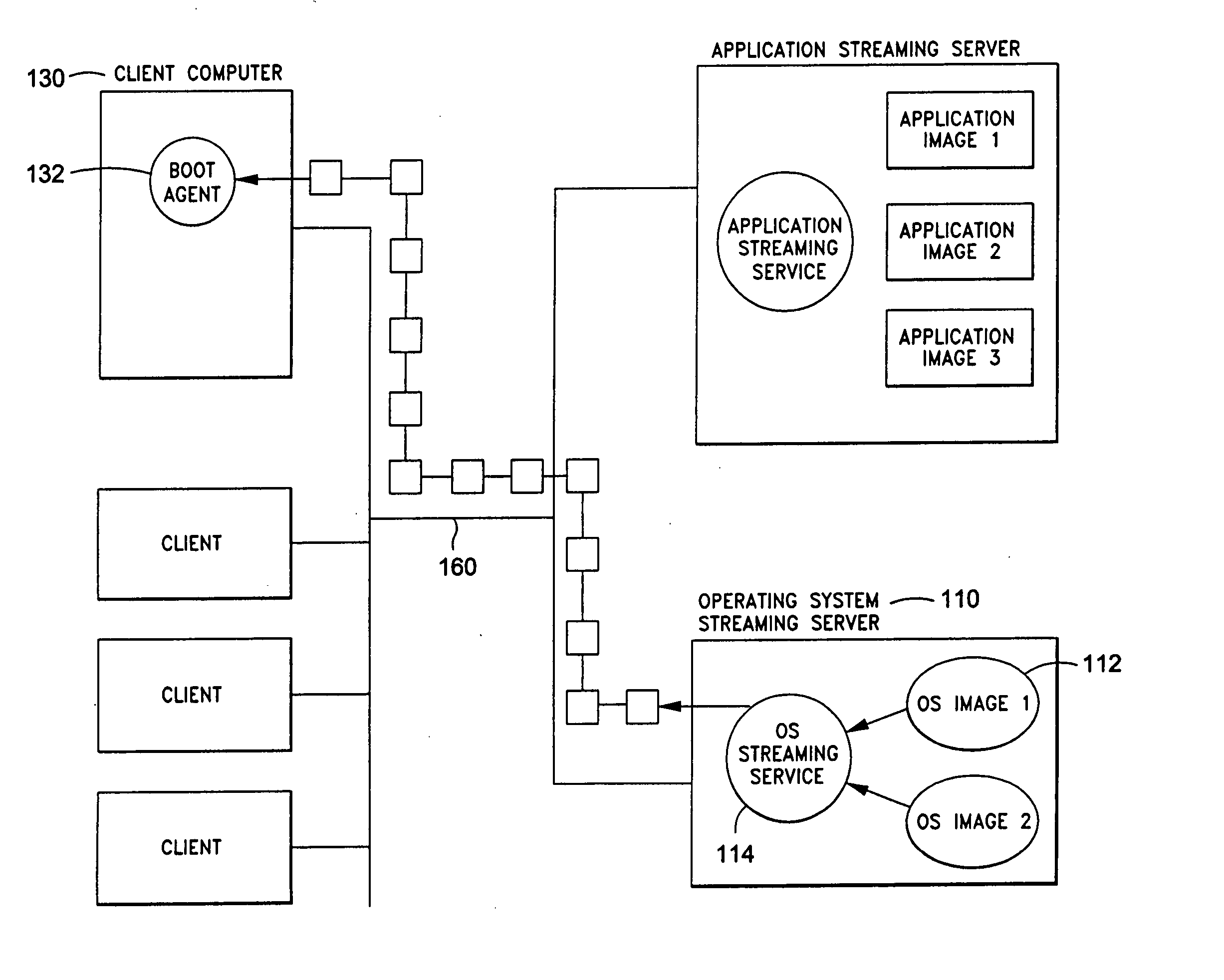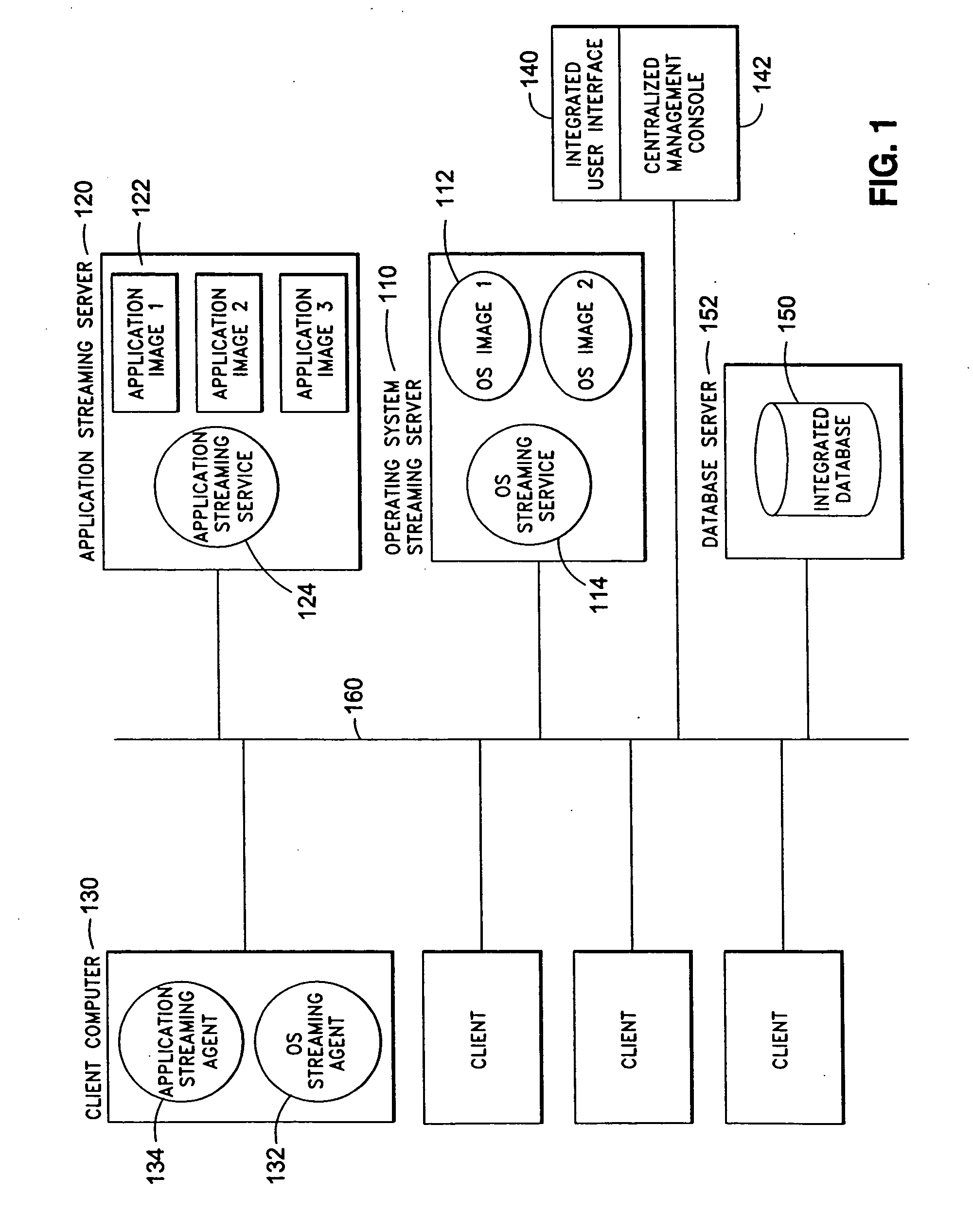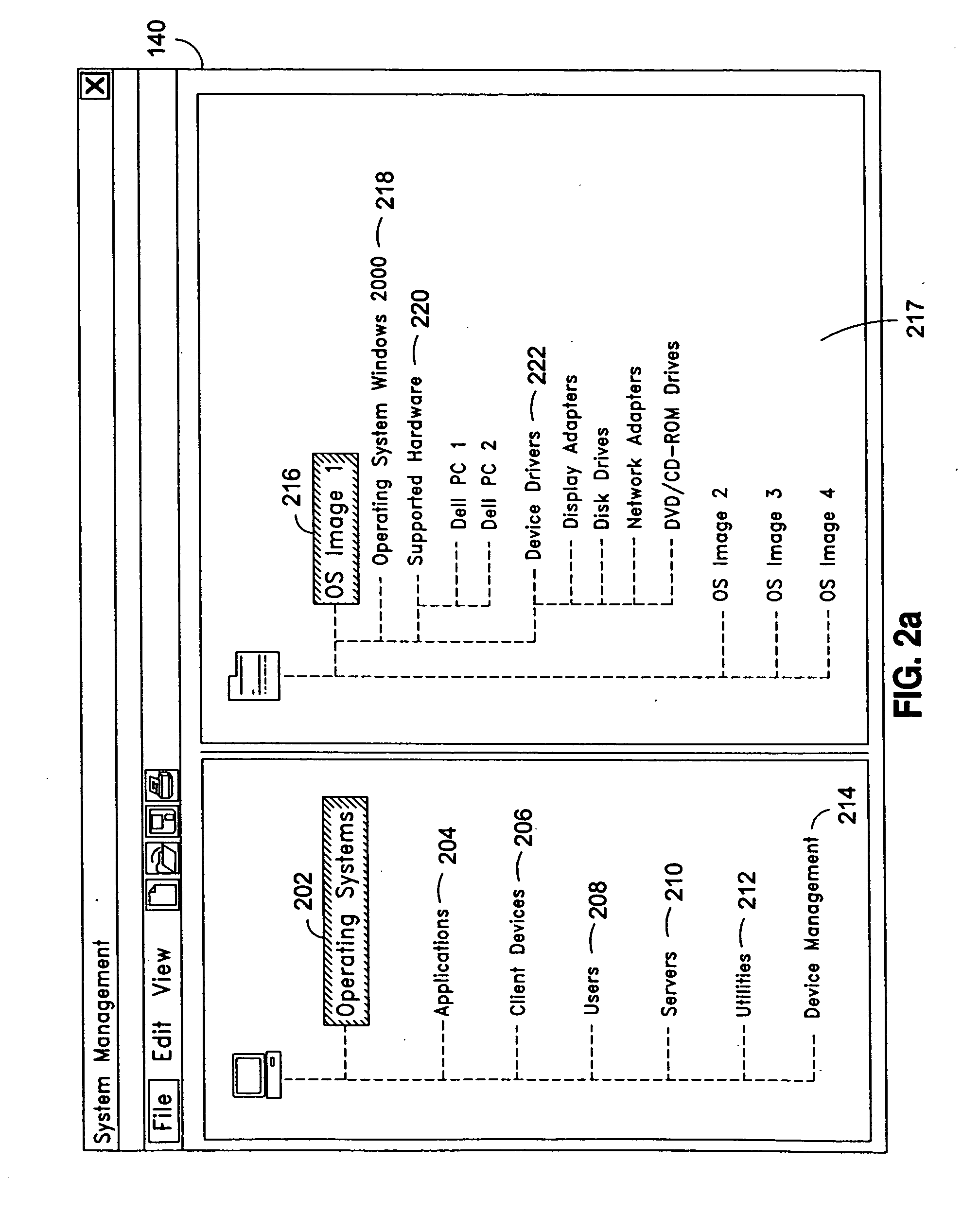System and method for integrated on-demand delivery of operating system and applications
a technology applied in the field of integrated on-demand delivery of operating system and application, can solve the problems of network computers such as diskless computers, which have traditionally suffered from poor performance, and the most expensive part of providing computing resources to end-users is not the cost of computing hardware and software, but the cost of on-going maintenance and managemen
- Summary
- Abstract
- Description
- Claims
- Application Information
AI Technical Summary
Benefits of technology
Problems solved by technology
Method used
Image
Examples
Embodiment Construction
[0038]FIG. 1 illustrates a conceptual block diagram of a system according to the present invention. As shown in FIG. 1, an embodiment of the system of the present invention can comprise: Operating System Streaming Server (110), Operating System Image (112), Operating System Streaming Service (114); Application Streaming Server (120), Application Image (122), Application Streaming Service (124); Client Computer (130), OS Streaming Agent (132), Application Streaming Agent (134), Integrated User Interface (140), Centralized Management Console (142), Integrated Common Database (150), and Database Server (152).
[0039] Client Computer (130) can be a thin client module, a PC, or a workstation without departing from the scope of the present invention. Client Computer (130) can also be any streaming client device ranging from a handheld device to a server class machine without departing from the scope of the present invention. In particular, Client Computer (130) can be a server machine such...
PUM
 Login to View More
Login to View More Abstract
Description
Claims
Application Information
 Login to View More
Login to View More - R&D
- Intellectual Property
- Life Sciences
- Materials
- Tech Scout
- Unparalleled Data Quality
- Higher Quality Content
- 60% Fewer Hallucinations
Browse by: Latest US Patents, China's latest patents, Technical Efficacy Thesaurus, Application Domain, Technology Topic, Popular Technical Reports.
© 2025 PatSnap. All rights reserved.Legal|Privacy policy|Modern Slavery Act Transparency Statement|Sitemap|About US| Contact US: help@patsnap.com



